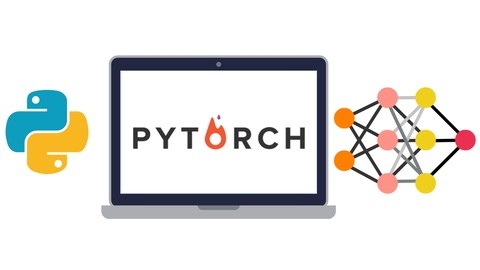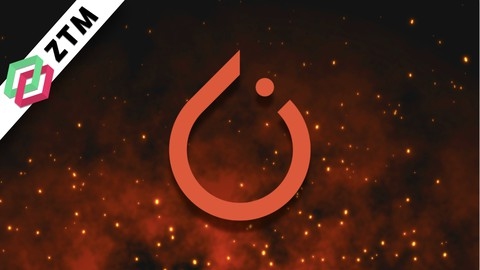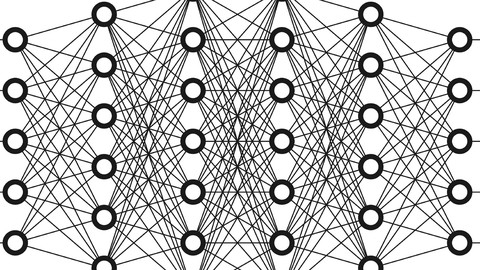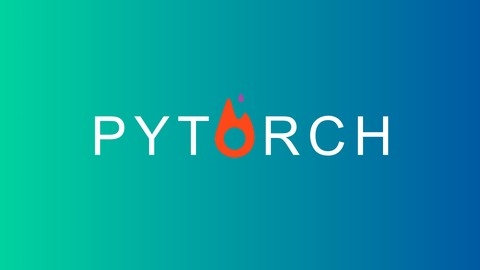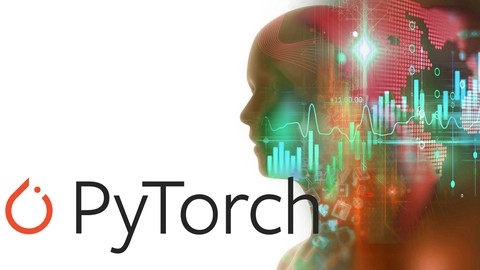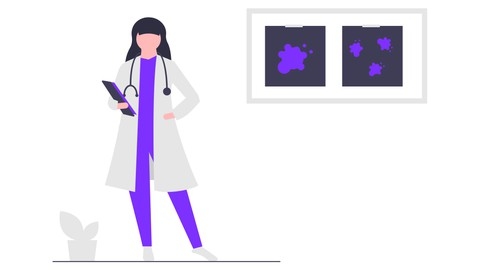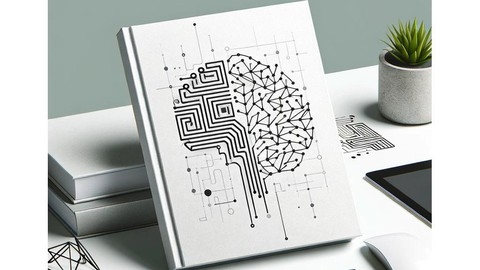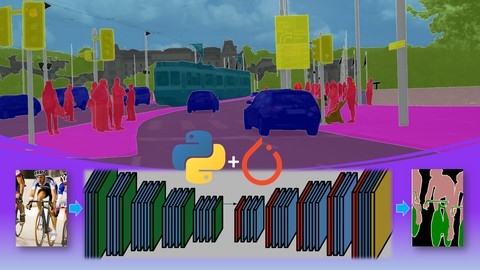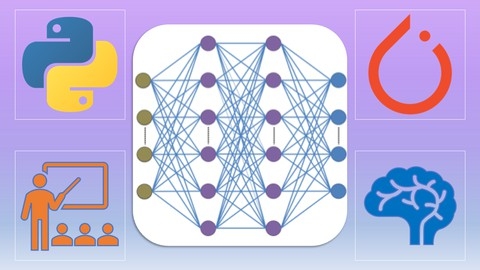PyTorch is a popular deep learning framework renowned for its flexibility, ease of use, and dynamic computational graph, making it a favorite among researchers and developers.
Mastering PyTorch unlocks a world of possibilities in AI, enabling you to build powerful models for image recognition, natural language processing, and more.
Finding the right PyTorch course on Udemy can be a daunting task, with countless options available.
You want a course that provides a comprehensive understanding of PyTorch’s capabilities, goes beyond theory with practical experience, and is taught by experts who can guide you through the complexities of deep learning.
We’ve reviewed countless courses and based on our analysis, “PyTorch for Deep Learning with Python Bootcamp” stands out as the best course on Udemy overall.
This course offers a well-structured curriculum that starts with the fundamentals of PyTorch and progresses to advanced topics like convolutional neural networks, recurrent neural networks, and natural language processing.
The instructor’s clear explanations, hands-on projects, and dedication to student success make this an excellent choice for beginners and experienced learners alike.
While this course is our top pick, there are other excellent options available on Udemy.
Whether you’re looking for a course focused on specific applications like computer vision, natural language processing, or reinforcement learning, or you prefer a more project-based approach, we’ve got you covered.
Keep reading to explore our full list of recommendations and find the perfect PyTorch course for your journey!
PyTorch for Deep Learning with Python Bootcamp
The course covers a wide range of topics, starting with the fundamentals of NumPy and Pandas, which are essential for working with data in Python.
From there, you’ll dive into the core concepts of PyTorch, including tensor operations and building basic neural networks.
The course then transitions into machine learning theory, covering supervised and unsupervised learning, overfitting, and performance evaluation metrics.
A significant portion of the course is dedicated to artificial neural networks (ANNs) and convolutional neural networks (CNNs).
You’ll learn about perceptron models, activation functions, cost functions, gradient descent, and backpropagation.
The hands-on coding examples include linear regression, multi-class classification, and working with popular datasets like MNIST and CIFAR-10.
The syllabus also covers recurrent neural networks (RNNs), which are crucial for sequence data like time series and natural language processing (NLP).
You’ll explore LSTMs, GRUs, and techniques for handling vanishing gradients.
Interestingly, the course touches on using GPUs with PyTorch and CUDA, which can significantly speed up training times for deep learning models.
Additionally, there’s a section on NLP with PyTorch, where you’ll learn about encoding text data, generating training batches, and building LSTM models for NLP tasks.
Throughout the course, you’ll find numerous coding exercises and solutions, allowing you to practice and reinforce the concepts you’ve learned.
PyTorch for Deep Learning Bootcamp
The course starts by introducing you to tensors, the building blocks of PyTorch models.
You’ll learn how to create, manipulate, and perform operations on tensors.
From there, you’ll dive into the PyTorch workflow, where you’ll build your first linear regression model and understand the training and testing process.
As you progress, you’ll explore neural network classification, learning how to build and train models for image classification tasks.
The course covers convolutional neural networks (CNNs) in detail, including techniques like data augmentation and transfer learning.
One of the highlights of the course is the section on custom datasets, where you’ll learn how to load and preprocess your own data for training models.
You’ll also learn about modular coding practices, making your code more organized and reusable.
The course then dives into advanced topics like experiment tracking with TensorBoard, replicating research papers, and model deployment.
You’ll learn how to track and compare multiple experiments, replicate a vision transformer model from a research paper, and deploy your models using tools like Gradio and Hugging Face Spaces.
Throughout the course, you’ll work on practical projects and exercises, ensuring that you not only understand the concepts but also gain hands-on experience in applying them.
The course also covers PyTorch 2.0 and the torch.compile feature, which can significantly improve model training performance.
The Complete Neural Networks Bootcamp: Theory, Applications
The course starts with a theoretical foundation, explaining the essence of neural networks, perceptrons, gradient descent, and the forward and backpropagation processes.
You’ll dive into loss functions like mean squared error, cross-entropy, and Huber loss, as well as activation functions such as sigmoid, ReLU, and swish.
As you progress, you’ll explore regularization techniques like L1/L2 regularization and dropout to prevent overfitting.
The course also covers optimization algorithms like stochastic gradient descent, momentum, RMSProp, and Adam, along with hyperparameter tuning and learning rate scheduling methods like cyclical learning rates and cosine annealing.
Diving into practical applications, you’ll implement neural networks from scratch using NumPy and PyTorch for tasks like diabetes prediction and handwritten digit recognition.
The course then introduces convolutional neural networks (CNNs), covering concepts like filters, feature maps, and architectures like ResNet and DenseNet.
You’ll apply CNNs to image classification tasks, including transfer learning and visualizing feature maps.
The syllabus also covers object detection with YOLO, autoencoders, variational autoencoders for tasks like deep fakes, and neural style transfer.
Recurrent neural networks (RNNs), LSTMs, and GRUs are explored for sequence modeling tasks like text generation and chatbots.
The course delves into transformers, covering attention mechanisms, positional encoding, and building a chatbot using transformers.
Additionally, you’ll learn about advanced topics like BERT for language modeling, vision transformers, and GPT for text generation.
The course even touches on techniques like gradient accumulation and running models on Google Colab.
PyTorch for Deep Learning and Computer Vision
You’ll start with the fundamentals of tensors and linear regression in PyTorch.
Then, you’ll dive into perceptrons and deep neural networks, exploring non-linear boundaries and backpropagation.
The course dedicates sections to image recognition tasks like classifying the MNIST dataset and the more challenging CIFAR-10 dataset.
You’ll learn about convolutional neural networks, a key architecture for computer vision tasks.
The syllabus covers important concepts like convolution layers, pooling, and data augmentation techniques.
One highlight is the transfer learning section, where you’ll work with pre-trained models like AlexNet and VGG16 on a new dataset.
This is a powerful technique to leverage existing knowledge.
The course also covers an intriguing topic - neural style transfer.
You’ll learn how to combine the content of one image with the artistic style of another using deep learning techniques like the Gram matrix.
Throughout, you’ll implement models in PyTorch, a popular deep learning library.
The syllabus includes links to source codes for various models covered.
If you need a refresher, there are optional appendices covering Python, NumPy, and the softmax function.
PyTorch: Deep Learning and Artificial Intelligence
The syllabus goes from the fundamentals of machine learning and neural networks to advanced concepts like Generative Adversarial Networks (GANs) and Deep Reinforcement Learning.
The course starts with an introduction to PyTorch and setting up your environment, ensuring you have the necessary tools and resources to follow along.
You’ll then dive into the basics of machine learning, including regression and classification models, before moving on to artificial neural networks (ANNs) and convolutional neural networks (CNNs) for image classification tasks.
One of the standout features of this course is its focus on practical coding experience.
You’ll get your hands dirty with numerous coding exercises and projects, working with datasets like MNIST and CIFAR-10.
This hands-on approach is invaluable for solidifying your understanding of the concepts.
The syllabus also covers a wide range of advanced topics, such as recurrent neural networks (RNNs) for time series and sequence data, natural language processing (NLP) with embeddings and text classification, and recommender systems with deep learning.
You’ll even explore cutting-edge techniques like transfer learning for computer vision and GANs for generating synthetic data.
If you’re interested in deep reinforcement learning, this course has you covered.
You’ll learn the theoretical foundations of reinforcement learning, including Markov Decision Processes, Q-Learning, and Deep Q-Learning, before applying these concepts to a stock trading project.
Throughout the course, you’ll have access to code, notebooks, and data, making it easy to follow along and experiment.
The instructor also provides tips and strategies for effective learning, ensuring you get the most out of the course.
Deep Learning with PyTorch for Medical Image Analysis
The course starts with a crash course on NumPy, covering the fundamentals of numerical computing in Python.
You’ll then dive into machine learning concepts like supervised learning, overfitting, and performance evaluation metrics.
The course takes you through the basics of PyTorch, including tensor operations and manipulations.
It then moves on to convolutional neural networks (CNNs), a key deep learning architecture for image analysis.
You’ll learn about CNNs by building models to classify handwritten digits in the MNIST data set.
With the CNN foundations in place, the course shifts gears to medical imaging.
You’ll get an overview of common medical imaging modalities like X-rays, CT scans, MRI, and PET scans.
The course covers working with standard medical data formats like DICOM and NIfTI files in Python.
The real fun begins with hands-on projects tackling medical image analysis tasks:
- Pneumonia classification from chest X-rays using CNNs
- Cardiac detection and localization in MRI scans
- Segmenting the left atrium from MRI volumes with U-Net
- Lung tumor segmentation from CT scans (capstone project)
- 3D liver and tumor segmentation from CT volumes
Throughout these projects, you’ll preprocess data, build PyTorch models, train them on GPUs, and evaluate performance.
The course even touches on techniques like interpretability and oversampling to improve model robustness.
PyTorch Ultimate 2024: From Basics to Cutting-Edge
You’ll start by setting up your system and getting an overview of artificial intelligence and machine learning models.
The course then dives into deep learning fundamentals, covering neural network architectures, layer types, activation functions, loss functions, and optimizers.
You’ll even build a neural network from scratch to solidify your understanding.
Next, you’ll explore tensors, the building blocks of computational graphs in PyTorch.
With the foundations in place, you’ll learn PyTorch modeling, including linear regression, batches, datasets, dataloaders, model saving/loading, training, and hyperparameter tuning.
The course covers classification models like multi-class and multi-label, with exercises to reinforce your learning.
Computer vision is a major focus, with sections on convolutional neural networks (CNNs) for image classification, object detection using techniques like YOLO, and style transfer.
You’ll also learn about pretrained networks and transfer learning, essential for leveraging existing models.
The course dives into sequential data with recurrent neural networks (RNNs) and long short-term memory (LSTM) models.
You’ll explore recommender systems, a crucial application in e-commerce and content platforms.
Generative models are covered through autoencoders and generative adversarial networks (GANs).
Graph neural networks, a powerful tool for analyzing structured data, are also introduced.
Natural language processing (NLP) is a key topic, with sections on word embeddings like GloVe, sentiment analysis, and applying pretrained NLP models.
You’ll even try zero-shot text classification, a cutting-edge technique.
The course touches on miscellaneous topics like OpenAI’s ChatGPT, popular architectures like ResNet and Inception, and techniques like extreme learning and retrieval-augmented generation.
Model debugging with hooks and deployment via REST APIs (on-premise and cloud) are covered, ensuring you can put your models into production.
The course wraps up with a bonus lecture and further resources.
Deep Learning for Beginners: Core Concepts and PyTorch
You’ll start by getting the big picture of deep learning, exploring concepts like machine learning types, neural network architecture, loss functions, and the unintuitive nature of deep learning.
This lays a solid theoretical foundation.
The course then walks you through reinventing deep neural networks from scratch.
You’ll understand linear regression, perceptrons, activation functions, and how neural networks learn through the back-propagation algorithm.
Visualizing computational graphs helps cement these core concepts.
Once you grasp the basics, the course tackles real-world challenges like the vanishing gradient problem, overfitting, regularization techniques like dropout, and optimizers beyond basic gradient descent.
You’ll learn best practices for hyperparameter tuning and loss functions like cross-entropy.
The final section focuses on coding neural networks using plain PyTorch, PyTorch’s nn module, and the high-level PyTorch Lightning library.
You’ll train models on the classic MNIST dataset, setting up your coding environment with Anaconda, Jupyter Notebook, and VSCode.
Throughout, the course strikes a balance between theory and hands-on implementation.
You’ll gain an intuitive understanding of deep learning principles while learning to build neural networks in PyTorch.
The progression from core concepts to coding makes this a comprehensive resource for deep learning beginners.
Deep Learning for Image Segmentation with Python & Pytorch
This course is an immersive journey into the world of image segmentation using Python and PyTorch.
You’ll start by understanding what semantic image segmentation is and its real-world applications, setting the stage for the upcoming concepts.
The course then dives deep into various deep learning architectures specifically designed for segmentation tasks, such as UNet, PSPNet, PAN, and MTCNet.
You’ll learn the intricacies of these models and how they approach the problem of segmentation.
To fuel your models, you’ll explore datasets and data annotation tools tailored for semantic segmentation.
This hands-on experience will ensure you have the right data to train your models effectively.
The course guides you through setting up Google Colab, a powerful cloud-based environment for writing and executing Python code.
You’ll learn to connect it with Google Drive, allowing seamless data access and storage.
Next, you’ll implement a customized PyTorch dataset class for efficient data loading, a crucial step in any deep learning pipeline.
Data augmentation techniques using the Albumentations library will help you enhance your training data and improve model performance.
As you progress, you’ll learn to implement data loaders in PyTorch, a vital component for feeding data to your models during training and inference.
Performance metrics like Intersection over Union (IoU) and pixel accuracy will be covered, enabling you to evaluate your segmentation models accurately.
Transfer learning and pretrained deep ResNet architectures will be explored, allowing you to leverage pre-existing knowledge and accelerate your model training process.
You’ll also delve into encoders and decoders specific to segmentation tasks in PyTorch.
The course culminates with implementing various segmentation models, such as UNet, PSPNet, DeepLab, PAN, and UNet++, using PyTorch.
You’ll learn to optimize hyperparameters, train your models, and test them, calculating metrics like class-wise IoU, accuracy, precision, recall, and F-score.
Finally, you’ll visualize your segmentation results and generate RGB output segmentation maps, bringing your models’ predictions to life.
Bonus resources, including complete code and datasets for segmentation with deep learning, are provided to solidify your understanding further.
Deep Learning with Python & Pytorch for Image Classification
You’ll start by understanding the concepts of image classification, both single and multi-label.
The course then dives into deep learning, explaining what it is and how it differs from traditional machine learning.
You’ll learn about artificial neurons, the building blocks of deep learning models.
Next, you’ll explore some of the most popular deep learning architectures like LeNet, VGG, ResNet, and GoogLeNet.
The course also introduces you to the concept of pre-trained models and their applications in deep learning.
Specifically for image classification, you’ll learn about deep learning architectures like ResNet and AlexNet.
The course teaches you how to set up Google Colab for writing Python code and connecting it with Google Drive to read and write data.
Data preprocessing is a crucial step, and you’ll learn how to do it for image classification tasks.
You’ll then dive into single-label and multi-label image classification using deep learning models like ResNet and AlexNet, complete with Python code examples.
Transfer learning is a powerful technique, and the course covers it in detail, including how to fine-tune deep ResNet models and use them as fixed feature extractors.
You’ll also learn about custom datasets, data augmentation, and dataloaders.
If you’re interested in building models from scratch, the course has you covered.
You’ll learn how to code convolutional neural networks (CNNs) from scratch using Python and PyTorch, train them, and optimize their performance.
Additionally, you’ll learn how to calculate accuracy, precision, recall, and visualize confusion matrices for your models.
The course provides resources, including Python and PyTorch code for image classification tasks.
As a bonus, you’ll even get a lecture on video object detection and image segmentation using Python.
